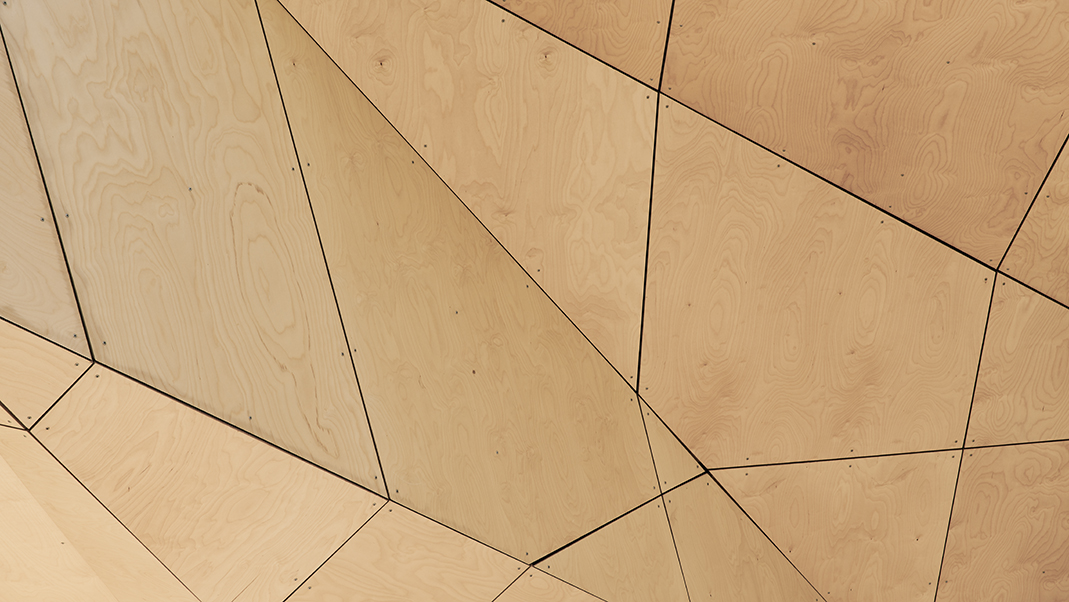29—09—2022
Which Coating is the Best Choice for Plywood?
Plywood is an attractive, durable and affordable material choice for a wide range of interior projects – and like any timber, the secret to keeping it looking good for longer is to protect it with the right coating.
There are a range of options when it comes to coatings for plywood, and each has its pros and cons. So how do you know which finish is the best choice?
In this article we share an overview of some of the most common plywood coatings, comparing their features and benefits to help you understand the differences so you can find the best fit.
Hard wax oil
Hard wax oil is an excellent choice for coating plywood, and is the finish that we use and recommend. The main point of difference is that it protects wood from the inside out, unlike most coatings which form a film on the surface only. Hard wax oil penetrates deeply into the timber, which not only results in a durable finish that looks fantastic and is easy to clean, maintain and repair, it also protects the plywood from cracking, flaking or peeling. On top of this, hard wax oil is made from natural products, including linseed, sunflower and thistle oils combined with food safe classified waxes and pigments, making it a safe and non-toxic finish that’s ideal for use in homes, schools and workplaces. Hard Wax oils also have a UV Exterior option for outdoor applications or areas of dampness which have inbuilt anti mold/anti-fungal properties.
Lacquer
Lacquer is a wood finish that is often used on furniture as a protective coating. In contrast to hard wax oil which penetrates the timber, lacquer forms a film on top of the wood for protection. There are a range of different lacquer finishes available, including acrylic and catalysed, and once cured, lacquer provides a hard, durable and waterproof finish. A significant drawback to lacquer is that most types contain synthetic solvents and chemicals such as formaldehyde, and while waterborne lacquers are available that contain less harmful products, they tend to be more prone to wear and tear and so are not as commonly used. Most lacquers will also blister or flake if exposed to direct UV or moisture – such as water spills on benchtops. They will also damage with heat from hot cups or serving ware.
Powder coating
Powder-coated plywood is a fairly recent innovation in Australia which has opened up a huge range of design possibilities. As the name suggests, powder coating involves applying layers of powder particles at high pressure, resulting in an attractive and durable finish. Powder coated plywood can be finished in a wide range of colours to suit your design, but keep in mind that any damage can be difficult to repair.
Paint
A traditional coating option for timber such as plywood is paint, however, achieving a long-lasting and attractive finish requires a number of steps. This includes sanding, applying a primer, painting with your desired colour, and then painting on a clear coating to finish. While this allows you to choose from an endless array of colours, it will also require a higher level of ongoing maintenance to maintain its durability and look, not to mention more time and effort to apply in the first place.
Talk to us about plywood coatings today
At Maxiply, our plywood panels are supplied pre-finished with durable, attractive and environmentally friendly hard wax oil, to save you time, effort and deliver the best result. Get in touch with our team on 1300 761 741 today if you have a question about plywood coatings or to discuss your project requirements.

29—09—2022
Plywood is an attractive, durable and affordable material choice for a wide range of interior projects – and like any timber, the secret to keeping it looking good for longer is to protect it with the right coating.
There are a range of options when it comes to coatings for plywood, and each has its pros and cons. So how do you know which finish is the best choice?
In this article we share an overview of some of the most common plywood coatings, comparing their features and benefits to help you understand the differences so you can find the best fit.
Hard wax oil
Hard wax oil is an excellent choice for coating plywood, and is the finish that we use and recommend. The main point of difference is that it protects wood from the inside out, unlike most coatings which form a film on the surface only. Hard wax oil penetrates deeply into the timber, which not only results in a durable finish that looks fantastic and is easy to clean, maintain and repair, it also protects the plywood from cracking, flaking or peeling. On top of this, hard wax oil is made from natural products, including linseed, sunflower and thistle oils combined with food safe classified waxes and pigments, making it a safe and non-toxic finish that’s ideal for use in homes, schools and workplaces. Hard Wax oils also have a UV Exterior option for outdoor applications or areas of dampness which have inbuilt anti mold/anti-fungal properties.
Lacquer
Lacquer is a wood finish that is often used on furniture as a protective coating. In contrast to hard wax oil which penetrates the timber, lacquer forms a film on top of the wood for protection. There are a range of different lacquer finishes available, including acrylic and catalysed, and once cured, lacquer provides a hard, durable and waterproof finish. A significant drawback to lacquer is that most types contain synthetic solvents and chemicals such as formaldehyde, and while waterborne lacquers are available that contain less harmful products, they tend to be more prone to wear and tear and so are not as commonly used. Most lacquers will also blister or flake if exposed to direct UV or moisture – such as water spills on benchtops. They will also damage with heat from hot cups or serving ware.
Powder coating
Powder-coated plywood is a fairly recent innovation in Australia which has opened up a huge range of design possibilities. As the name suggests, powder coating involves applying layers of powder particles at high pressure, resulting in an attractive and durable finish. Powder coated plywood can be finished in a wide range of colours to suit your design, but keep in mind that any damage can be difficult to repair.
Paint
A traditional coating option for timber such as plywood is paint, however, achieving a long-lasting and attractive finish requires a number of steps. This includes sanding, applying a primer, painting with your desired colour, and then painting on a clear coating to finish. While this allows you to choose from an endless array of colours, it will also require a higher level of ongoing maintenance to maintain its durability and look, not to mention more time and effort to apply in the first place.
Talk to us about plywood coatings today
At Maxiply, our plywood panels are supplied pre-finished with durable, attractive and environmentally friendly hard wax oil, to save you time, effort and deliver the best result. Get in touch with our team on 1300 761 741 today if you have a question about plywood coatings or to discuss your project requirements.






